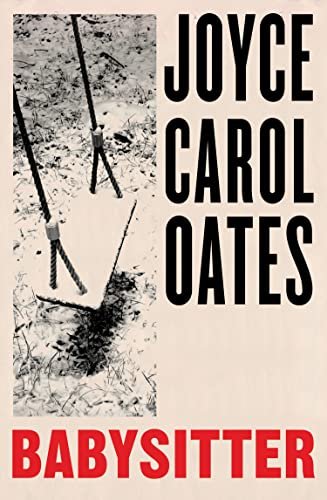The opening of “Babysitter” obsessively focuses on a few moments in time as a woman ascends in a glass hotel elevator to the 61st floor and walks down a corridor to a room with a sign on the door that loudly declares “PRIVACY PLEASE! DO NOT DISTURB”. Hannah is a wealthy wife and mother living in a Detroit suburb in the 1970s. She has arrived for an assignation and to engage in an affair with a mysterious man she met briefly at a party. Like in a fairy tale, violating the message on this door and entering the room will irrevocably alter her life to liberate or destroy it. However, this story isn't as concerned with consequences as it is in moments in our life when there is a profound shift from one stage to another. So the narrative catches in a time loop like a snippet of film which plays over and over: “The vision overcame her. And this, too, cinematic, in a flash. Yet, strangely, not a vision so much as a memory.” The style of detailing the minutiae of a seemingly ordinary action is reminiscent of Nicholson Baker's “The Mezzanine” and by following Hannah in these brief moments we come to understand her position in life and her milieu of white upper class privilege. She is a passive woman living amongst deadly powerful men who make their own rules and dominate the people around them. This novel presents a vivid, hallucinatory and thought-provoking portrait of those whose lives brush against an elusive serial killer preying upon children.
It's easy to criticise a character such as Hannah who is preoccupied with brand labels and social status. She takes her housekeeper Ismelda for granted as she's frequently left to care for Hannah's children and Hannah's grand house. Hannah neglects her children unless she's being hysterically attentive to them. But she also had a difficult upbringing with a possibly violent/abusive father. Her husband is frequently absent and callous towards her. She seems to have no close friends and she becomes trapped in a perilous or even deadly situation. As she gradually becomes aware of the danger of the men around her, she becomes trapped in a circumstance where she's completely lost control. The story also focuses on a young man named Mikey who was an orphan and comes from a troubled background. He's a sort of fixer that takes care of dodgy jobs for nefarious men. Just like Hannah, he underestimates the absolute power and sway of these men who only show favour to Hannah and Mikey when they can use them. However, Mikey is a chameleon who reinvents himself and develops a psychological armour to shield himself from the world. He's lawless but has a moral centre from which he deals out his own sense of justice. It feels tragic that there is a deep disconnect between Hannah and Mikey because they could be natural allies, but they have such different personalities and ways of coping.
The story doesn't only report on the murder of children by a deranged serial killer, but also the state sanctioned murder of an innocent black man who is targeted by police after Hannah returns to her home in a dishevelled and damaged state. Yet the public accept this as justified and it quickly passes out of their minds. Oates' National Book Award winning 1969 novel “them” is partly about the racial tensions which led to a “riot” or “rebellion” in Detroit in 1967. The endemic racism in the city is still very present during the later 1970s when “Babysitter” is set and the shadow of these events loom over the characters. In his racist paranoia, Hannah's husband is quick to persecute a black man regardless of his total innocence. As always in Oates' fiction, notions of justice don't naturally align with the law as the ideologies governing these characters' lives are the truly ruling factor. It's hypnotic how this novel captures the resulting psychological chaos of living in a world of predators and prey. The tension of whether this horrific serial killer will be stopped is depicted alongside a woman whose reality is broken as she's trapped in a perpetual nightmare.
You can watch me discuss “Babysitter” with Joyce Carol Oates here: https://www.youtube.com/watch?v=StX-dEuDo3A








